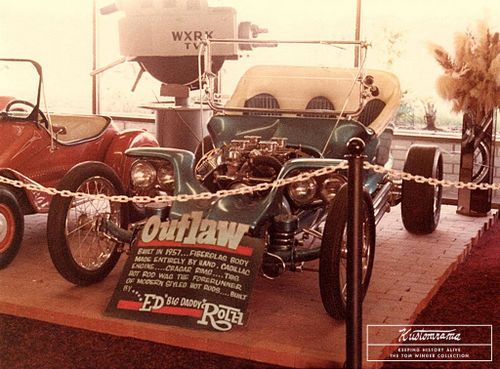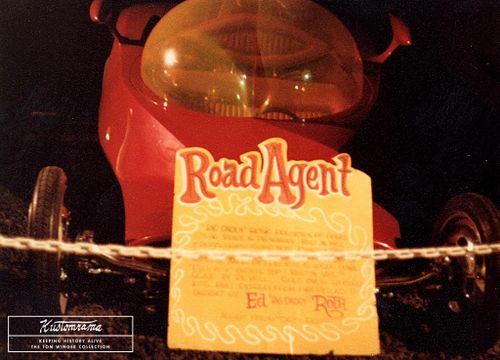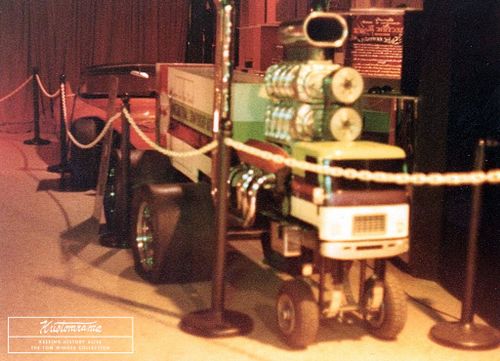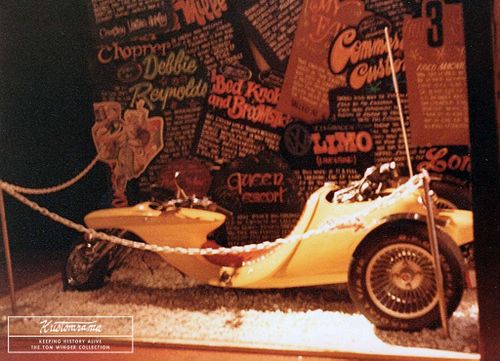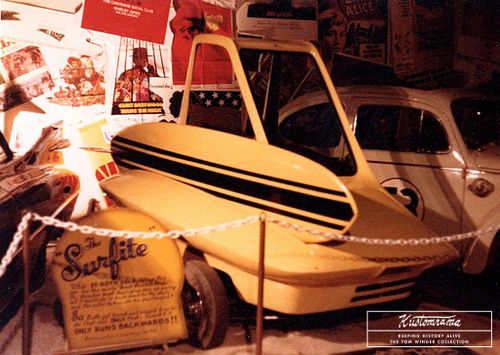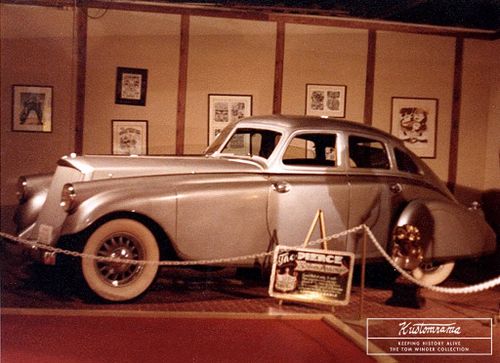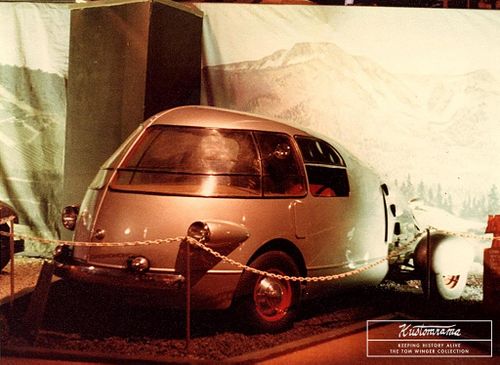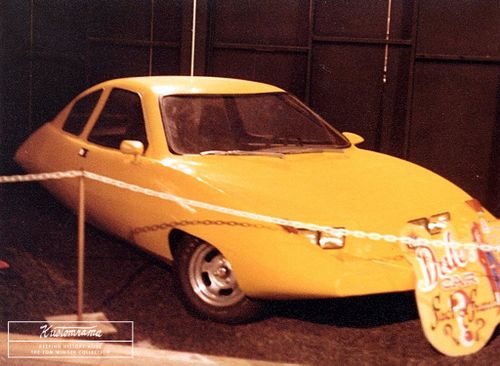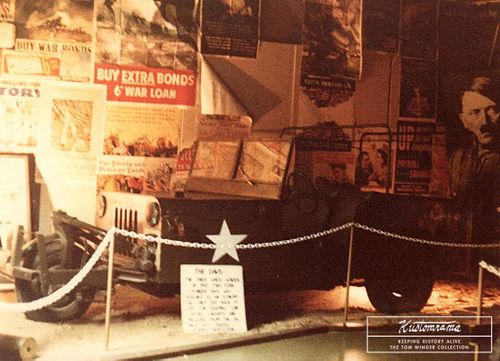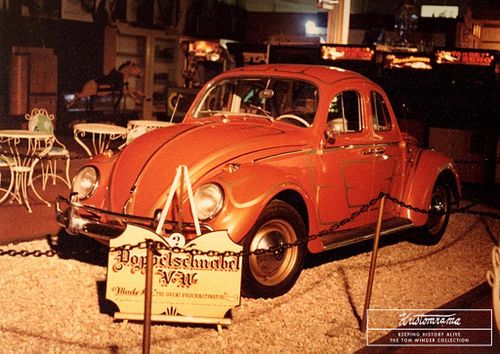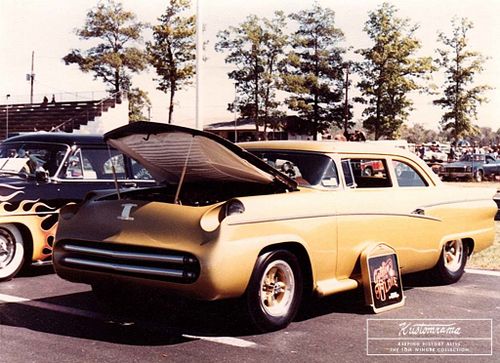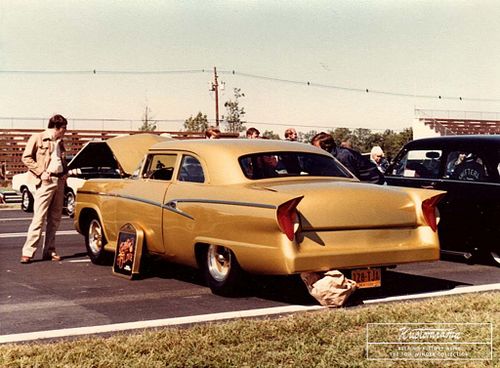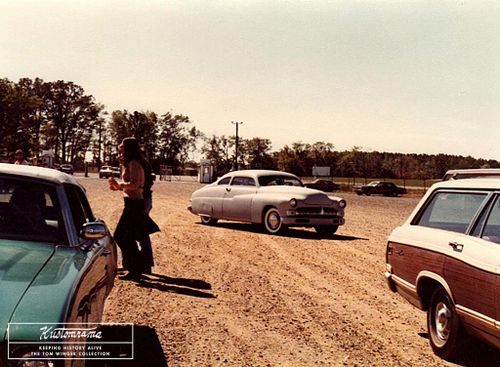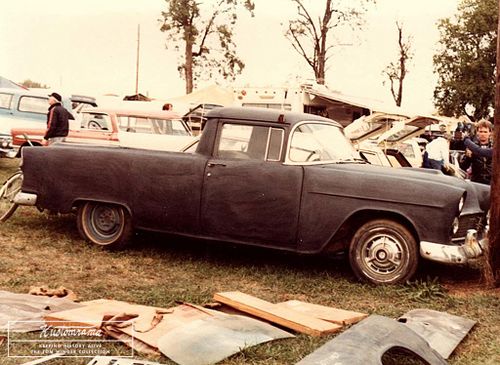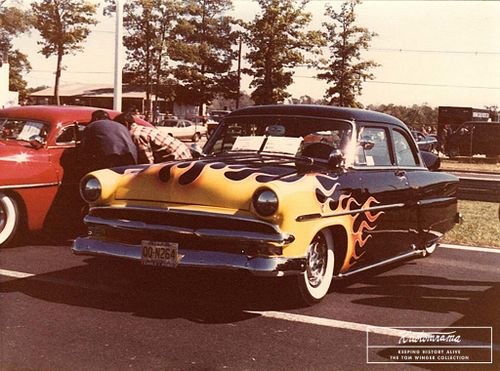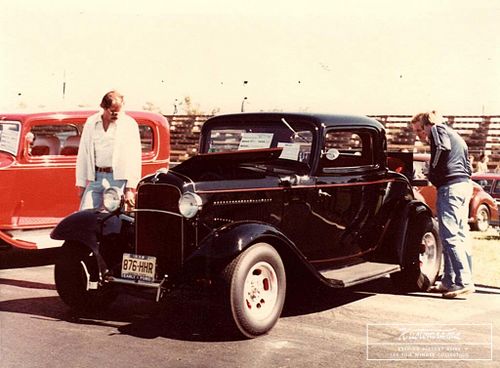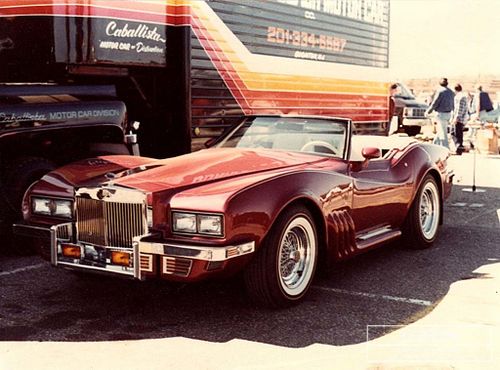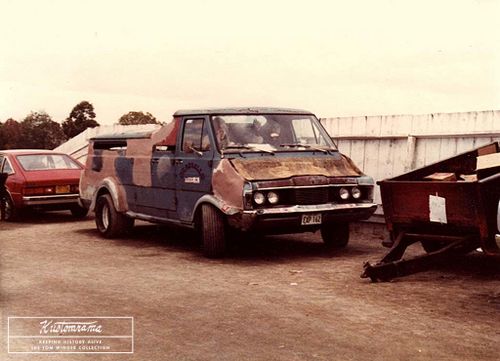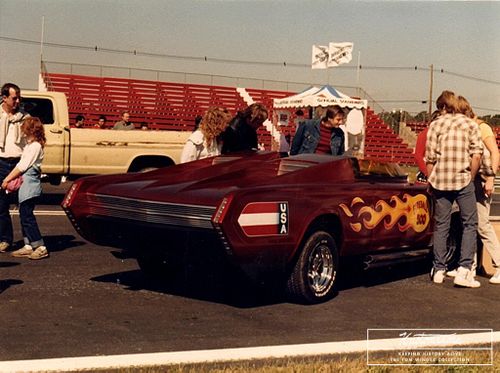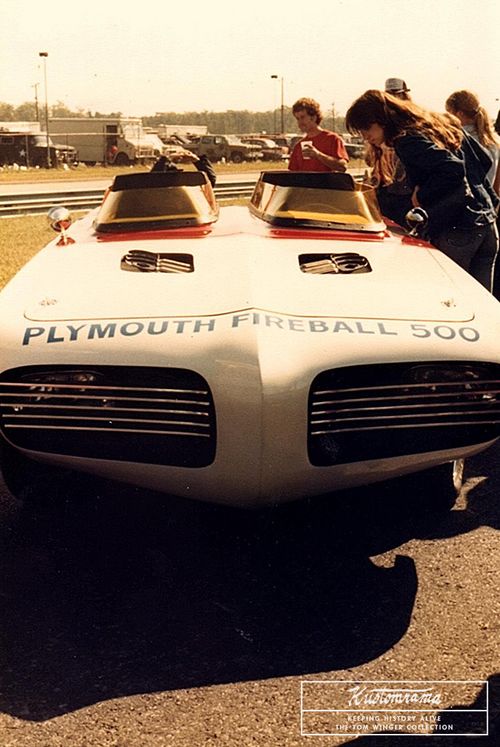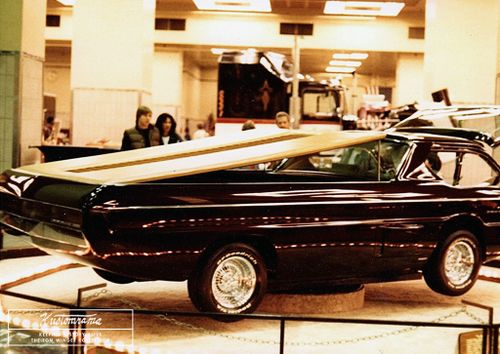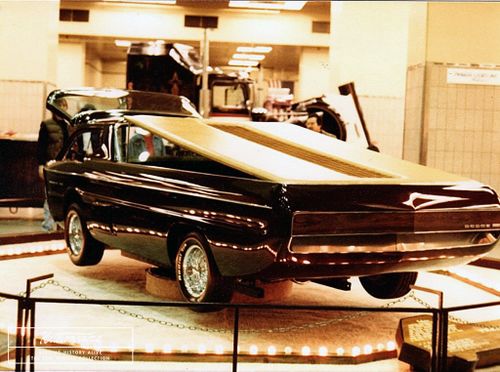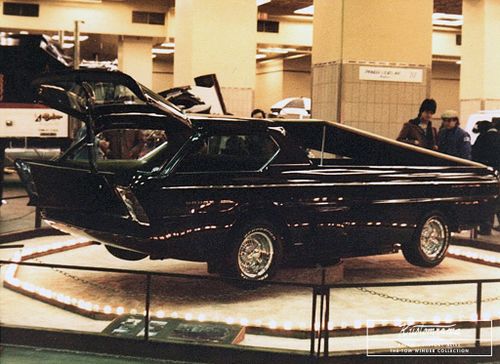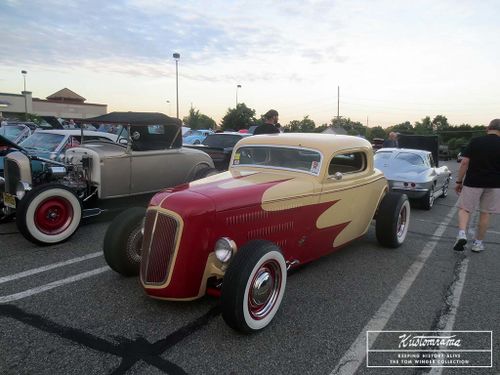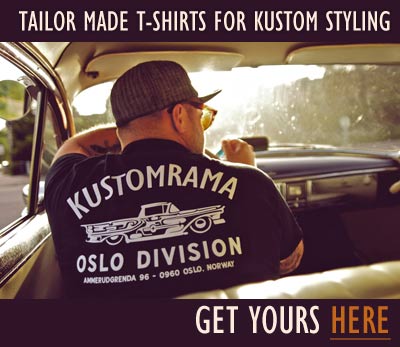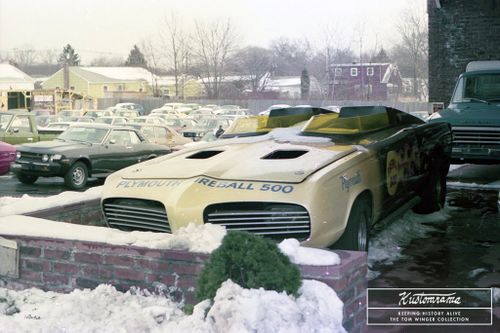
Captured in the mid-
1970s outside
Great Western Motors in
Greenbrook,
New Jersey, this photo shows the
Fireball 500, a radically customized
1966 Plymouth Barracuda built by
Barris Kustoms for the
Frankie Avalon and
Annette Funicello film
Fireball 500. With its striking dual-cockpit design and aggressive race-inspired styling, the car was a
Hollywood showpiece. Underneath, it packed a
426 Hemi and was reportedly capable of 160 mph. After its time in the spotlight, the car ended up as a promotional piece for the dealership, sitting outside, exposed to the elements. By the early
1980s, the
Fireball 500 had fallen into disrepair, its bodywork crumbling due to its quick-build movie prop origins. Photo courtesy of
Tom Winger.

This rare close-up shot captures the
Fireball 500’s distinctive dual-cockpit design, a hallmark of its futuristic styling. Built by
Barris Kustoms, the car featured twin butyrate plastic windshields with flared headrests molded seamlessly into the bodywork. Photo courtesy of
Tom Winger.

This rear view of the
Fireball 500 Barracuda, taken in the mid-
1970s at
Great Western Motors in
New Jersey, highlights the car’s distinctive aerodynamic styling. Designed by
Barris Kustoms for the
1966 film
Fireball 500, the car featured an extended rear with sculpted streamliner fins, a louvered rear grille, and vertically stacked taillights integrated into the futuristic bodywork. Though built for
Hollywood spectacle, the
Fireball 500 was more than just a movie prop—it was a fully functional custom with a
426 Hemi under the hood. By the time of this photo, it had become a promotional attraction, braving the elements as it sat outside the dealership. Photo courtesy of
Tom Winger.
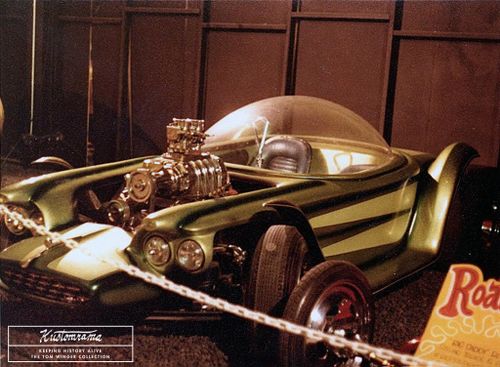
Captured during Tom's
1979 visit to
MovieWorld – Cars of the Stars in
Buena Park,
California, this photo showcases
Ed "Big Daddy" Roth’s legendary
Beatnik Bandit. Built in
1960, the
Beatnik Bandit was based on a shortened
1950 Oldsmobile chassis and featured
Roth’s signature wild styling, including a futuristic
bubble top, which he formed using a pizza oven. Steering, gas, shifting, and braking were all controlled via a single center stick, making it more of a rolling art piece than a practical driver. Originally painted by
Larry Watson, the
Beatnik Bandit went through various transformations over the years. After countless miles on the show circuit, it was repainted by
Dirty Doug. In
1970,
Roth sold the car to collector
Jim Brucker for just $50, who later traded it to
Harrah's in
Reno. Restored to its original version in
1985, the
Beatnik Bandit remains an icon of
Kustom Kulture and is now on permanent display at the
National Automobile Museum in
Reno,
Nevada. Photo courtesy of
Tom Winger.

Captured during Tom's
1979 visit to
Movieworld – Cars of the Stars, this photo showcases one of
Chuck Miller’s wild
Zingers creations. Built by
Styline Customs, the
Zingers were over-the-top, cartoon-inspired vehicles featuring exaggerated proportions, massive engines, and oversized rear wheels. Designed to look like a shrunken-down van with a towering powerplant, this
Zingers Van embodied the playful, exaggerated aesthetic of the era.
Chuck Miller, a master of radical show cars, created the
Zingers series as a fun take on hot rod culture, bringing them to life as both full-size show vehicles and popular model kits. Photo courtesy of
Tom Winger.
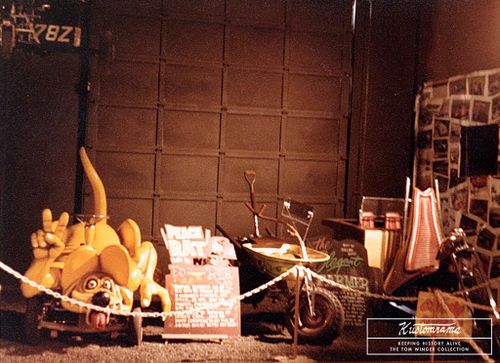
During his
1979 visit to
Movieworld – Cars of the Stars, Tom captured this display of three wacky
Ed "Big Daddy" Roth creations. On the left is
The Peace Rat, a wild, cartoonish vehicle with a massive fiberglass rat flashing a peace sign. In the center is
The Elegant Farmer, a one-of-a-kind wheelbarrow rod, and to the right, a custom trike that rounds out the display, showcasing
Roth’s ability to transform even the most unconventional ideas into drivable machines. Photo courtesy of
Tom Winger.
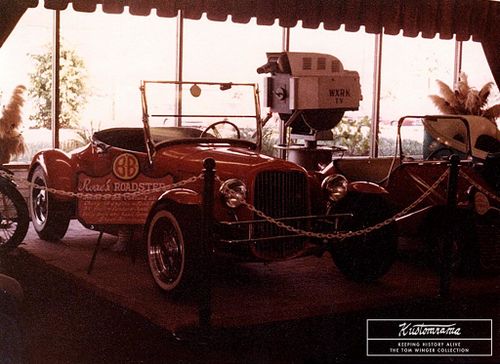
During his
1979 visit to
Movieworld – Cars of the Stars, Tom photographed
Rose's Roadster, a beautifully crafted Model T roadster with a unique blend of classic styling and custom modifications. This fully fendered hot rod featured a sectioned
1932 Ford grille, giving it a sleeker, more refined look while maintaining its traditional early hot rod character. Photo courtesy of
Tom Winger.
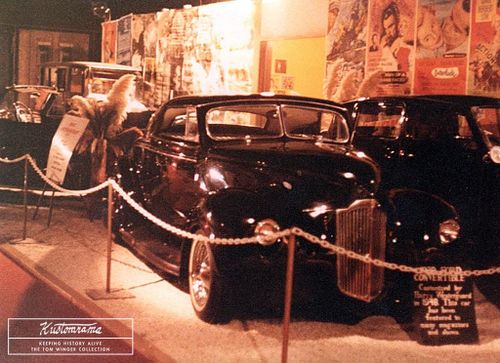
During his
1979 visit to
Movieworld – Cars of the Stars, Tom captured this historic early custom,
Mel Falconer's 1939 Ford, restyled by the legendary
Harry Westergard in the mid-
1940s. Widely regarded as one of Westergard’s most famous builds, this Ford set the stage for the custom car movement with its smooth, elegant lines and innovative details. Displayed among some of the most famous
show rods of all time, Falconer’s Ford at
MovieWorld was a reminder of Westergard’s pioneering influence on early custom car design. Photo courtesy of
Tom Winger.
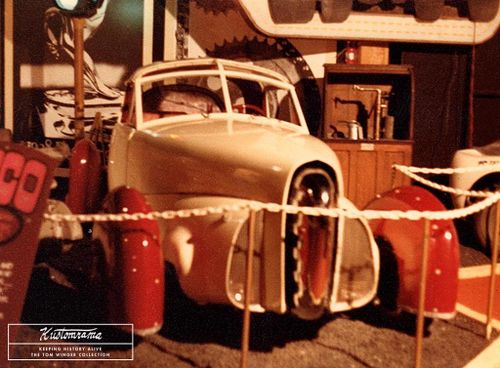
Captured by Tom during his
1979 visit to
MovieWorld – Cars of the Stars, this rare automobile is the
1948 Tasco, a revolutionary
concept car designed by
Gordon M. Buehrig, the mastermind behind the
Auburn 851 Speedster,
Cord 810/
812, and
Duesenberg Model J variants. Built on a
1947 Mercury chassis,
Tasco was a futuristic vision of an American
sports car, featuring an aeronautical-inspired cockpit, a two-piece removable plexiglass roof—credited as the first
T-top design—and distinctive detached fiberglass fenders that turned with the wheels. Despite its advanced styling and engineering,
Tasco never made it into production, remaining a one-of-a-kind testament to Buehrig’s innovation. Photo courtesy of
Tom Winger.
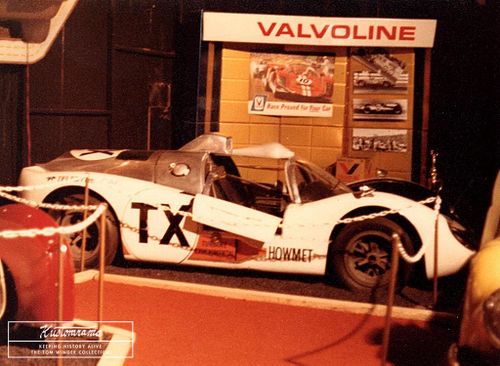
Photographed by Tom during his
1979 visit to
MovieWorld – Cars of the Stars, this rare
Howmet TX (Turbine eXperimental) was an ambitious attempt to revolutionize sports car racing with turbine power. Designed by
Ray Heppenstall and built in
1968, the TX was the only turbine-powered race car to ever win a sanctioned race, securing two
SCCA victories in its single season of competition. Featuring a
McKee Engineering chassis and a
Continental Aviation gas turbine engine, the
Howmet TX later set six FIA land speed records after its retirement from racing. Displayed at Movieworld among other historic vehicles, it stood as a testament to the bold engineering experiments of the
1960s. Photo courtesy of
Tom Winger.
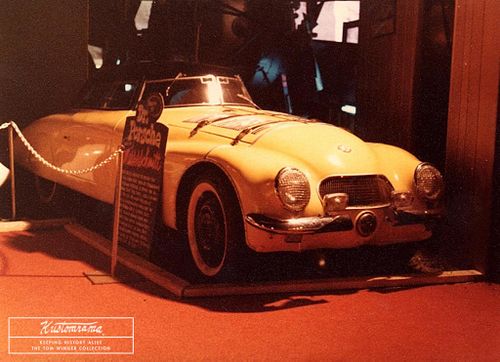
Captured by Tom during his
1979 visit to
MovieWorld – Cars of the Stars, this unique sports car was displayed with a sign reading
Dr. Porsche, hinting at a possible connection to the legendary automotive engineer
Ferdinand Porsche. With its rounded fenders, distinctive grille, and classic European styling, the car bears a resemblance to early
Porsche and
Volkswagen-based prototypes. However, its exact origins remain a mystery. Displayed among other rare and historic automobiles, this car added an air of intrigue to
MovieWorld’s diverse collection. Photo courtesy of
Tom Winger.
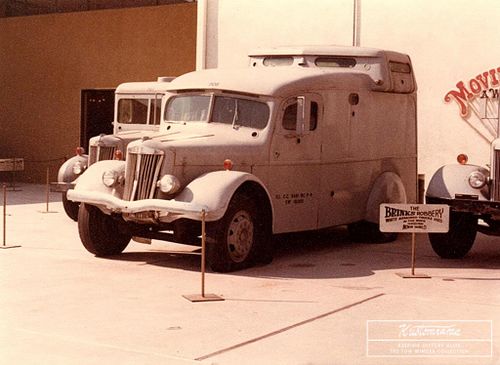
Captured by Tom during his
1979 visit to
MovieWorld – Cars of the Stars, these armored trucks were used in a movie about the Great Brink’s Robbery, one of the most infamous heists in U.S. history. On January 17,
1950, a gang of masked men executed a meticulously planned robbery at the Brink’s building in
Boston’s North End, making off with $2.775 million in cash, checks, and securities. The crime remained unsolved for nearly six years until a disgruntled gang member testified just before the statute of limitations expired. Photo courtesy of
Tom Winger.
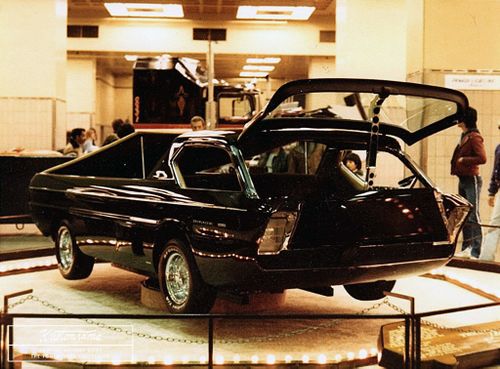
A rare glimpse of the iconic
Dodge Deora during its Root Beer Brown Metallic phase. These photos, taken at the Hot Rod show at the Colosseum in NYC around
1982, capture the legendary
Alexander Brothers’ custom in one of its lesser-seen iterations. Originally based on a Dodge A100 and designed by
Harry Bradley, the Deora featured a groundbreaking front-entry hatch and sleek cabless lines. After winning the
Ridler Award in
1967, it became one of the most recognizable customs ever, immortalized as a
Hot Wheels car. Photo courtesy of
Tom Winger.

Captured by Tom in the early
1980s at the
NYC Coliseum, this photo showcases
Ed “Big Daddy” Roth’s legendary
Outlaw after its restoration by
Harrah’s. Originally built in
1959, The Outlaw was Roth’s first fiberglass creation, and the wild show rod featured a chromed-out chassis, a Cadillac V8, and a hand-laid
fiberglass body that
Roth formed through trial and error in his
Maywood shop. After years of being hauled from show to show and a stint in green
metalflake,
The Outlaw was sold to collector
Jim Brucker in
1970 for just $50. Thankfully, it was later restored to its original pearl white and candy green panel job, preserving
Roth’s groundbreaking vision for future generations to admire. Photo courtesy of
Tom Winger.

Joe Sulpy's Parisienne Clone turning heads at the
Starlight Cruisers of Boonton Friday night cruise in
Boonton,
New Jersey in
2024. Originally started by
Joe Sulpy III, the build is a heartfelt tribute to
Richard Korkes' Parisienne. Joe III, who admired the original car as a teenager in the late
1950s, chose a
1957 Chrysler Saratoga as the base for the recreation. Aside from the frame, windshield, and tail lamps, the entire car was transformed. After Joe III became seriously ill, his son completed the project, preserving not just a car, but a father-son dream. In
2008, Joe IV relocated to
Buckeye,
Arizona, taking the Parisienne clone with him. Photo courtesy of
Tom Winger.
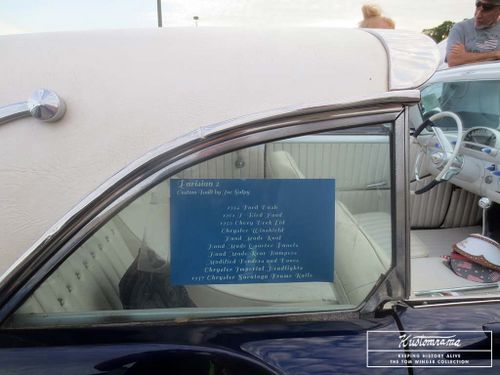
A closer look at the build sheet displayed in the quarter window of the
Parisian 2, revealing the parts mashup behind the custom. Built by
Joe Sulpy, the car combines elements from at least eight different vehicles, including a
1954 Ford dash,
1961 Ford T-Bird hood,
1959 Chevrolet deck lid, and
1957 Chrysler Saratoga frame rails. The windshield and handmade roof are Chrysler pieces, while the quarter panels and bumpers were custom-crafted. Dubbed a tribute to the original Parisienne by
Richard Korkes, this clone is a true Frankenstein of finesse, blending classic parts into one seamless custom vision. Photo courtesy of
Tom Winger.
Kustomrama Photo Archive
For as long as he can remember, Tom Winger has had an eye for cars. From the streets to dealer lots and car shows, he was always drawn to the unique details and designs that made each vehicle special. In the early 1970s, he began capturing these moments through photography, documenting the ever-evolving world of customs, muscle cars, hot rods, and factory originals. His collection grew over the decades, preserving a visual history of the cars and culture that shaped his passion.
Tom's love for automobiles was deeply rooted in his childhood. At the age of eight, he picked up his first car magazine, a defining moment that set him on a lifelong journey of collecting, building, and customizing. His fascination extended to model cars, leading him to enter contests and refine his craft as a builder. When he got his driver's license in 1969, muscle cars dominated the streets, and his father’s brand-new Pontiac GTO eventually became his. Like many enthusiasts of the era, he personalized the car with performance upgrades and modifications, learning through trial and error. The GTO remained in his collection for decades, a testament to his dedication to the cars he loved.
Through the years, Tom continued to photograph cars wherever he went. His snapshots captured not only the machines but also the spirit of the times, whether it was a rare custom at a show or a muscle car sitting on a dealership lot waiting for its first owner. The Tom Winger Photo Collection is a glimpse into his world, offering a visual journey through decades of automotive history. His photos are a lasting tribute to the cars, trends, and innovations that fueled his passion, preserving moments that might have otherwise been lost to time.
Kustomrama is an encyclopedia dedicated to preserve, share and protect traditional hot rod and custom car history from all over the world.



